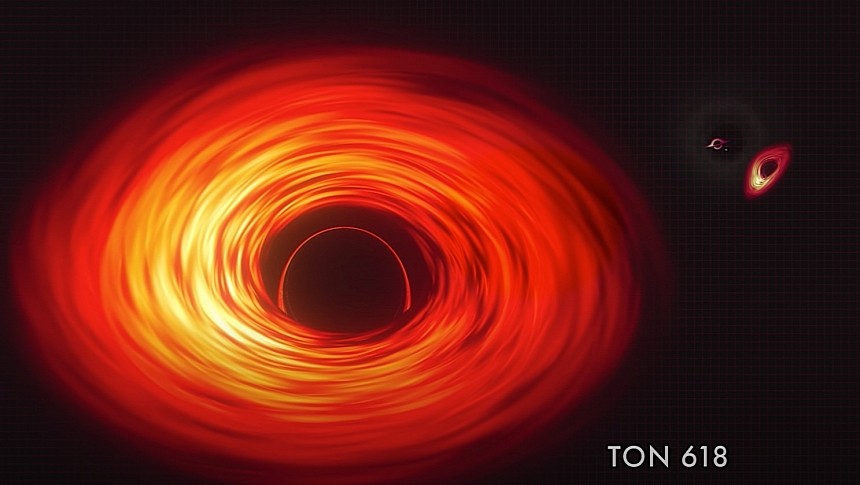The biggest thing we can experience more or less directly in our solar system is the Sun. It's 864,000 miles (1.390 million km) in diameter, large enough to make up for over 99 percent of the mass of our entire solar system, and could fit inside it some 1.3 million planets the size of Earth. And yet, it's tiny compared to the true giants of the Universe: black holes.
Black holes are something one can't easily wrap their head around. Astronomers usually describe them not as natural structures but as places, locations in space so with so much matter squeezed into a tiny space that their gravitational pull allows nothing to escape, not even light. And because of this black holes are also invisible.
And they are not all created equal. They vary in size from 100,000 times the mass of our Sun to billions of times more. The ones at the far end of the mass spectrum are called supermassive black holes, and they are so huge that they're absolutely scary. And NASA has an video animation video to prove it.
I said black holes are invisible, but we do have tools that can help us detect them. Thanks to these we know black holes are generally located at the center of every galaxy. Our own Milky Way has one, called Sagittarius A. We know it's 4.3 million times larger than the Sun in terms of mass, and if we are to judge by the size of its shadow, it would be as large as half of Mercury's orbit in the solar system.
Sagittarius A is one of ten black holes NASA used to put together this animation (check the video below). The smallest is in a dwarf galaxy called 1601+3113, which is only 100,000 times to size of our Sun. It's so compressed, though, that its shadow is actually smaller than our star.
At the opposite spectrum sits a behemoth called Ton 618. As one of only a handful of distant black holes we know of (it's located 10.37 billion light years from our planet), it has the mass of 60 billion Suns, and its shadow is so large it would take light weeks to cross it. If only it could do that, of course.
The thing about supermassive black holes is that we don't really know how they got to be this big. One theory is that when galaxies slam into each other (our Milky Way will collide with Andromeda billions of years from now), their center black holes could merge, increasing in size. Continuously eating up the matter around them also helps black holes grow in size.
As for how they first came to be, we don't actually know that. The general consensus is the smaller ones appeared at the birth of the Universe through a process that is not explained. Others could be born as the result of very large stars collapsing onto themselves.
And they are not all created equal. They vary in size from 100,000 times the mass of our Sun to billions of times more. The ones at the far end of the mass spectrum are called supermassive black holes, and they are so huge that they're absolutely scary. And NASA has an video animation video to prove it.
I said black holes are invisible, but we do have tools that can help us detect them. Thanks to these we know black holes are generally located at the center of every galaxy. Our own Milky Way has one, called Sagittarius A. We know it's 4.3 million times larger than the Sun in terms of mass, and if we are to judge by the size of its shadow, it would be as large as half of Mercury's orbit in the solar system.
Sagittarius A is one of ten black holes NASA used to put together this animation (check the video below). The smallest is in a dwarf galaxy called 1601+3113, which is only 100,000 times to size of our Sun. It's so compressed, though, that its shadow is actually smaller than our star.
At the opposite spectrum sits a behemoth called Ton 618. As one of only a handful of distant black holes we know of (it's located 10.37 billion light years from our planet), it has the mass of 60 billion Suns, and its shadow is so large it would take light weeks to cross it. If only it could do that, of course.
The thing about supermassive black holes is that we don't really know how they got to be this big. One theory is that when galaxies slam into each other (our Milky Way will collide with Andromeda billions of years from now), their center black holes could merge, increasing in size. Continuously eating up the matter around them also helps black holes grow in size.
As for how they first came to be, we don't actually know that. The general consensus is the smaller ones appeared at the birth of the Universe through a process that is not explained. Others could be born as the result of very large stars collapsing onto themselves.










